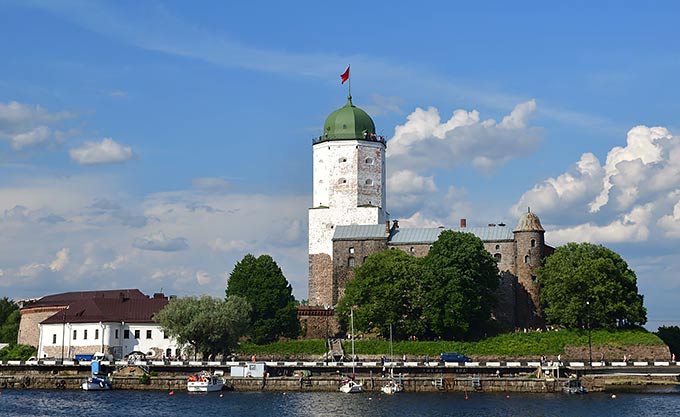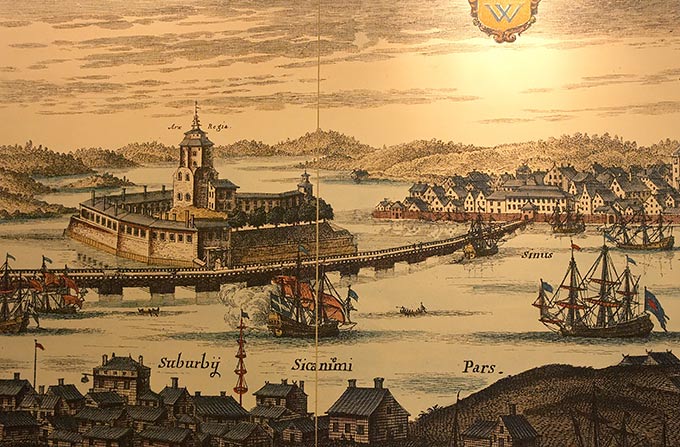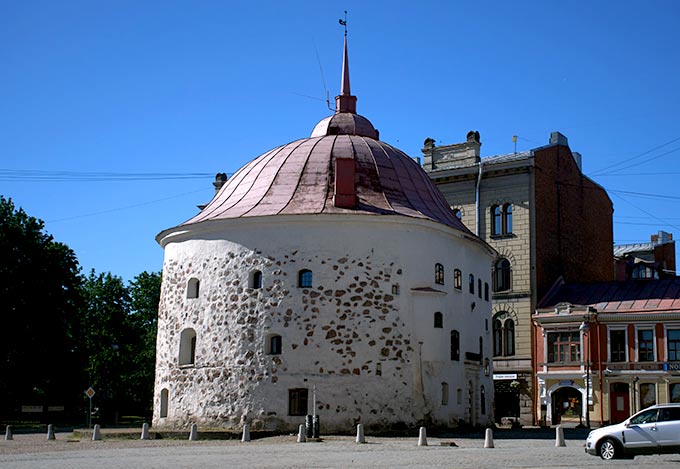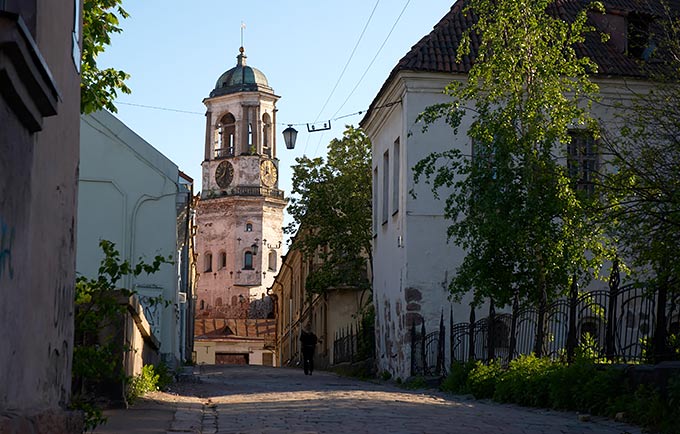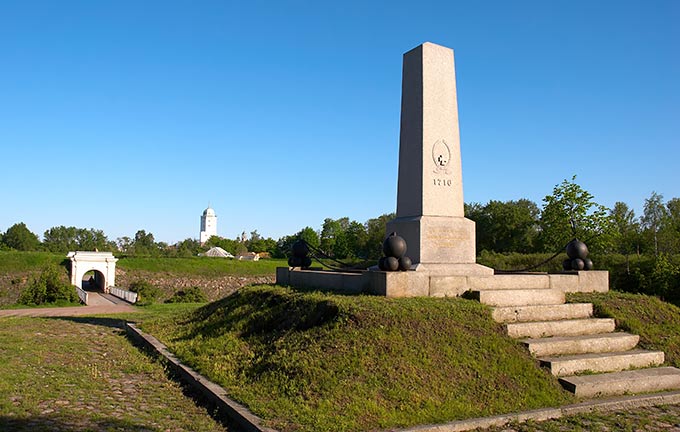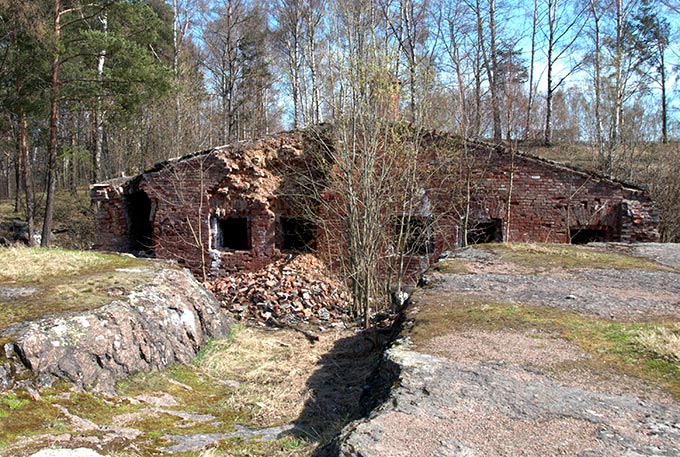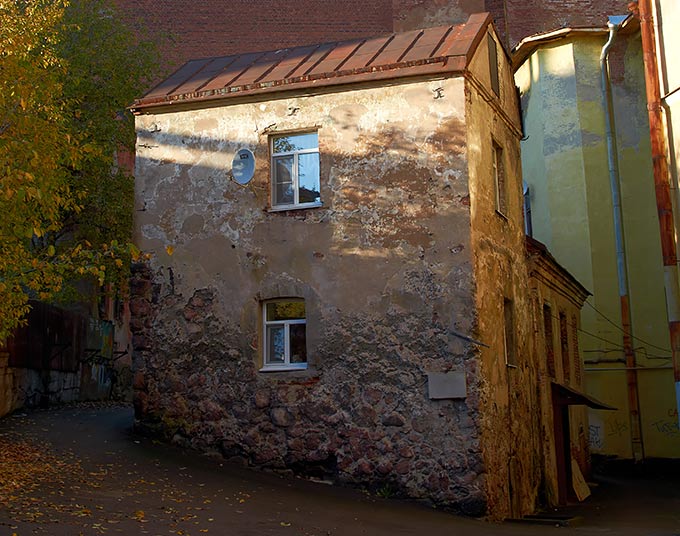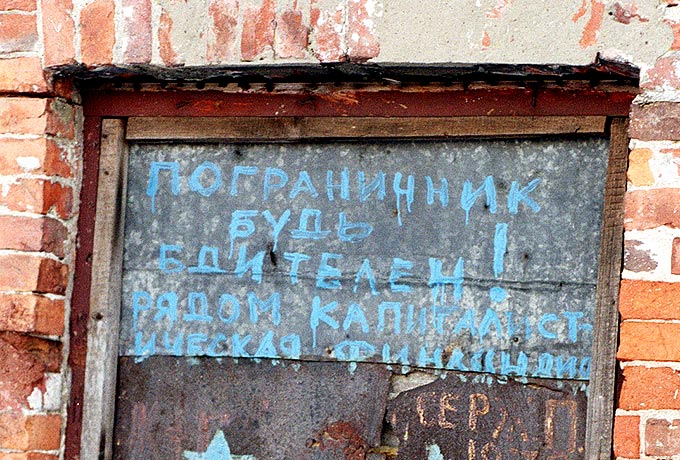History of Vyborg
In 1293 the governor of Sweden Torgils Knutsson with the blessing of the Pope undertook the third crusade to Southern Karelia. This campaign began with foundation of the fortress of Vyborg. The castle on rocky island consisted of the powerful tetrahedral tower surrounded with high wall.
In 1294 and 1322 there were unsuccessful attacks of the Novgorod forces.
In 1323 the treaty between Sweden and Novgorod Republic was signed and first division of Karelian's land was made. In according to that treaty the border on the Sestra river was established. By the way, the word "Ruotsi" (Sweden) means "land of Russ" or "Rus's land" in according to some researches.
In 1470-75 city fortifications with ten towers was built. Vyborg castle became one of the most powerful fortresses in Ruotsi.
In 1495 was the end of Tatar yoke over Russia. Moscow tzar Ivan III seized city Novgorod. The commandant of Vyborg Knut Posse mustered a home guard - all about 1900 persons. September, 21 - the city was besieged by Russian armies (near 10000, many guns and 120 vessels). Fierce attacks were lasted for the three weeks. Famine began in the city in November. New big storm was on November,30. Russians seized one of the towers. Defenders brought to the tower barrels with powder and blew it up. It was named "the Vyborg Thunder" later. The storm was a failure. December, 4 - siege was taken off.
In 1555 the reconstruction of fortifications began. Old towers were demolished. New walls and bastions of the "Horned" fortress were erected. Tower of S.Olaf in the Castle was reconstructed too - the top floors were built on.
In 1617 "Stolbovsky" treaty was signed. The fortress loosed its military importance.
In 1700 the Northern war began. In 1706 Russian armies appeared near Vyborg. This storm was a failure. In 1710 a big Russian army (8000) under the command of Peter I besieged the Vyborg. In 6 weeks later, September,13, last Swedish commandant Magnus Stientole handed the city over. Vyborg became a provincial city of Russian Empire. From that time, Vyborg was losing its trading importance and its population decreased.
In 1730-42 Annenskie fortifications were erected to the north the Castle.
In 1860 medieval city fortifications were demolished. "Horned" fortress was reconstructed and "East Positions" were built on the Batarejnaja hill under management of Russian engineer E.Totleben.
Om November, 30 1939, 9.00 the Winter war and first soviet bombardment of Vyborg began. 10 persons were killed this day. The artillery shelling began in December. There were severe bombardments in February, including the "pernicious Sunday" February, 18. The 80% of city buildings were badly damaged or destroyed.
On March, 13 1940 - the Winter war was over. The front line was taken position on the east side of Batarejnaja Hill. At 15.15 local time the Finnish flag was lowered on the castle tower.
On June, 26 1941 the Continuation war began. Finns came in Vyborg on August, 29 1941.
On June, 9 1944 Soviet army assumed the big offensive on the Karelian Isthmus. On June, 18 evacuation of town began. On June, 20 Vyborg was seized by Soviets again. At 16.45 Finns blew the fortress bridge up and left city of Vyborg forever. On September, 14 the peace treaty Finland-USSR was signed.
Impressions
This is the small ancient European city on an edge of vast Asian empire. It takes only 3 hours by the electric train from Saint-Petersburg. And I have rambled on humpbacked streets and looked for the traces of previous civilization.
They were there, that traces - the old bas-relief of lion with a sword, the vague inscription unknown language on ancient wall, or old well-founded masonry, which could not be done under Soviet authority principally. And of course, the Castle - something unique on the territory of former great and awful U.S.S.R.
There were other European type fortresses in our empire - Narva, Tallinn, Riga. But, they all have gone to the west in the "Time of Troubles" (1990-95 or "Perestroikka") and I have not any word of condemnation.
Vyborg is still here. It just comes to be a little more decayed, as it is seen in comparison with shining Saint-Petersburg, especially. It is sad to watch the dusty and broken streets, crumbling walls of buildings and non-civilized bazar on the Market square.
But I like it anyway because it is my homeland. So it goes...
Land forts and fortress:
Bip Castle Gatchina Ivangorod Izborsk Kexholm Kirillov Monastery Koporye Novgorod Pechorskiy Monastery Peter&Paul Fortress Porkhov Pskov Schlisselburg Staraya Ladoga Tikhvin Vyborg Hameenlinna Hamina Kastelholm Kymenlinna Lappaenranta Raseborg Castle Savonlinna Tavetti Turku Visby Fredrikstadt Fredriksten Hegra Fort Hoytorp Fort Arensburg Narva Tallinn Antipatris Caesarea Jerusalem Latrun Fort Masada
Sea forts and fortresses:
Alexander Fort Ino Fort Krasnaya Gorka Fort Kronstadt: Kotlin isl. Kronstadt: North Forts Kronstadt: South Forts Trongsund Hanko Svartholm Sveaborg Marstrand Siaro Fort Vaxholm Oscarsborg
Artillery batteries and individual guns:
Coastal Artillery Hemso Fort
Fortified areas and defensive lines:
Karelian Fortified Area (KaUR) KrUR Leningrad Mannerheim Line Nevsky Bridgehead VT Line Harparskog Line Salpa Line Gothland
Russian
S e a r c h All news

